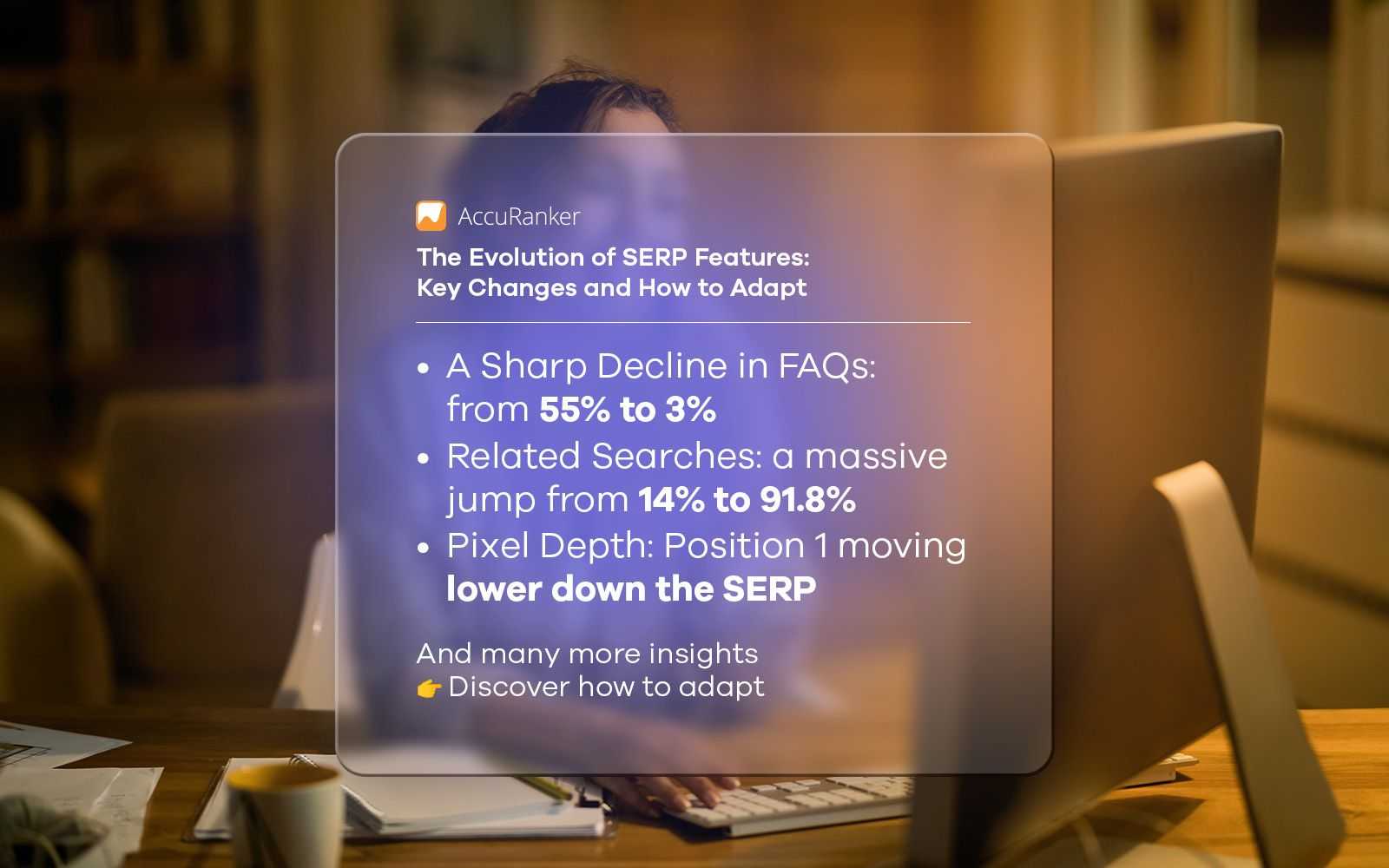How to Quickly Measure Social Media Reach in 2023?
Last updated on Thursday, August 31, 2023


What is social media reach?
Social Media Reach is the total number of people exposed to a specific social media post or campaign, referred to as social media reach. The number of impressions, likes, shares, comments, and followers are also examples of social media reach. Businesses and individuals can understand the level of engagement and impact on their target audience that their social media presence is having by measuring the reach of their online presence.
The importance of measuring social media reach in 2023
Measuring social media reach in 2023 is crucial because it offers essential information about how well social media strategies work. Businesses and individuals can assess the effectiveness of their campaigns, spot areas for improvement, and modify their strategies as necessary by knowing the total number of people they reach. Measuring social media reach also enables more precise audience targeting, content optimization, and, ultimately, higher user engagement and brand awareness.
Top 4 crucial metrics for measuring social media reach

1. Engagement
There are different types of engagement metrics that can be used to measure your social media outreach, such as likes, comments, shares, and brand mentions, all of which can be tracked and monitored with social media analytics tools such as Brand24 and Hootsuite. In this part of the article, we will examine all of these engagement metrics.
Likes, comments, shares
Some crucial metrics for assessing social media reach are likes, comments, and shares. Likes reflect interest and engagement, whereas comments reveal deeper involvement and virality potential. The most critical metrics are shares because they show which content resonates with the audience enough for them to share it with their own networks, thereby increasing its visibility and reach.
Brand mentions
Brand mentions are when a user makes a brand mention on social media. These are useful metrics for assessing social media reach and are trackable through social listening tools (such as Keyhole, for example). Monitoring brand sentiment, identifying brand advocates, and measuring the success of social media campaigns can all be done by keeping track of brand mentions.
Share of voice
A metric called "share of voice" calculates the proportion of online discussions that bring up a specific brand compared to its rivals. It is a helpful metric for assessing a brand's social media market share and visibility. Brands can pinpoint areas where they are underperforming and create strategies to strengthen their social media presence by monitoring their share of voice.
2. Awareness
Impressions, reach, and social mentions are among the awareness metrics that gauge social media reach. These statistics can help you understand how many people see and interact with your content. Once again, these metrics can be measured and monitored using Keyhole. We will be examining the importance of each individually.
Impressions
Impressions are the number of times your social media content appears on a user's screen, whether or not they’ve engaged with it. You can use this metric to determine the size and reach of your content's potential audience. Use impressions in conjunction with other metrics, but keep in mind that they do not always indicate engagement or conversions.
Reach
On social media, the term "reach" refers to a metric used to estimate a potential audience's size. It speaks of the total variety of users who view a post or advertisement. To ensure the right audience is being reached, evaluate reach, post frequency, and targeting strategies.
3. Conversions
Conversions track the number of users who performed a desired action, like making a purchase or filling out a form, in response to a social media post or advertisement. Keep track of conversion rates to evaluate the success of your social media campaigns.
Cost-per-click (CPC)
The cost that an advertiser incurs for each click on their ad is measured by the cost-per-click (CPC) metric used in social media advertising. By contrasting the CPC with the money made from the campaign, it is possible to monitor the success of a social media advertising campaign. However, CPC should be combined with other metrics for a thorough analysis because it does not measure social media reach by itself.
Click-through rate (CTR)
The number of clicks on a link or advertisement divided by the total number of impressions is known as the click-through rate (CTR). It can be used to assess how well a social media campaign performs in terms of increasing engagement and website traffic. CTR should be examined in conjunction with other metrics, such as impressions and conversions, because it does not give a comprehensive picture of social media reach on its own.
Conversion rate
The percentage of users who perform the desired action after engaging with a social media campaign is measured by the conversion rate. It can be used to assess how well a social media campaign is working to influence user behavior, such as making a purchase or completing a form. To fully understand social media reach, conversion rate should be examined along with other metrics like CTR and impressions.
Social media ROI
The return on investment (ROI) for social media campaigns compares the amount of money made by the campaign to the cost of running it. It can be used to assess how well a social media campaign performed overall to achieve commercial objectives like increased sales or brand recognition. Social media ROI should be examined in conjunction with other metrics like engagement and reach to fully understand campaign performance.
4. Referrals & customer care
Referrals
The number of users directed to a brand's social media pages or website by another user's post or share is measured by referrals. Referrals can be used to assess how well a social media campaign performs in terms of generating organic reach and raising brand awareness. Referrals and referral program ROI are crucial metrics to monitor since they can also result in more sales and new clients.
Response time
A brand's response time to a user's question or comment on social media is measured using the response time social media metric. A prompt response can boost brand loyalty and customer satisfaction. Monitoring response times can help businesses find areas for customer service enhancement and guarantee prompt responses to customer questions and concerns.
Response rate
Response time tracks how quickly a brand responds to questions or comments posted by users. A quick response time can raise brand loyalty and increase customer satisfaction. Monitoring response times can assist businesses in determining where customer service can be improved while also ensuring prompt responses to customer questions and concerns.
7 Tools for Measuring Social Media Reach
Now that we’ve established all the different metrics to keep track of when it comes to social media reach, we’ll dive next into the different tools you can use to measure social media reach.
Google Analytics

Google Analytics is a free tool that can be used to monitor website traffic and user behavior to gauge social media reach. Brands can assess how successfully their social media campaigns bring in visitors and money by setting goals and monitoring conversions. Brands can also track social media referrals and examine user interaction with their social media profiles using Google Analytics.
Keyhole
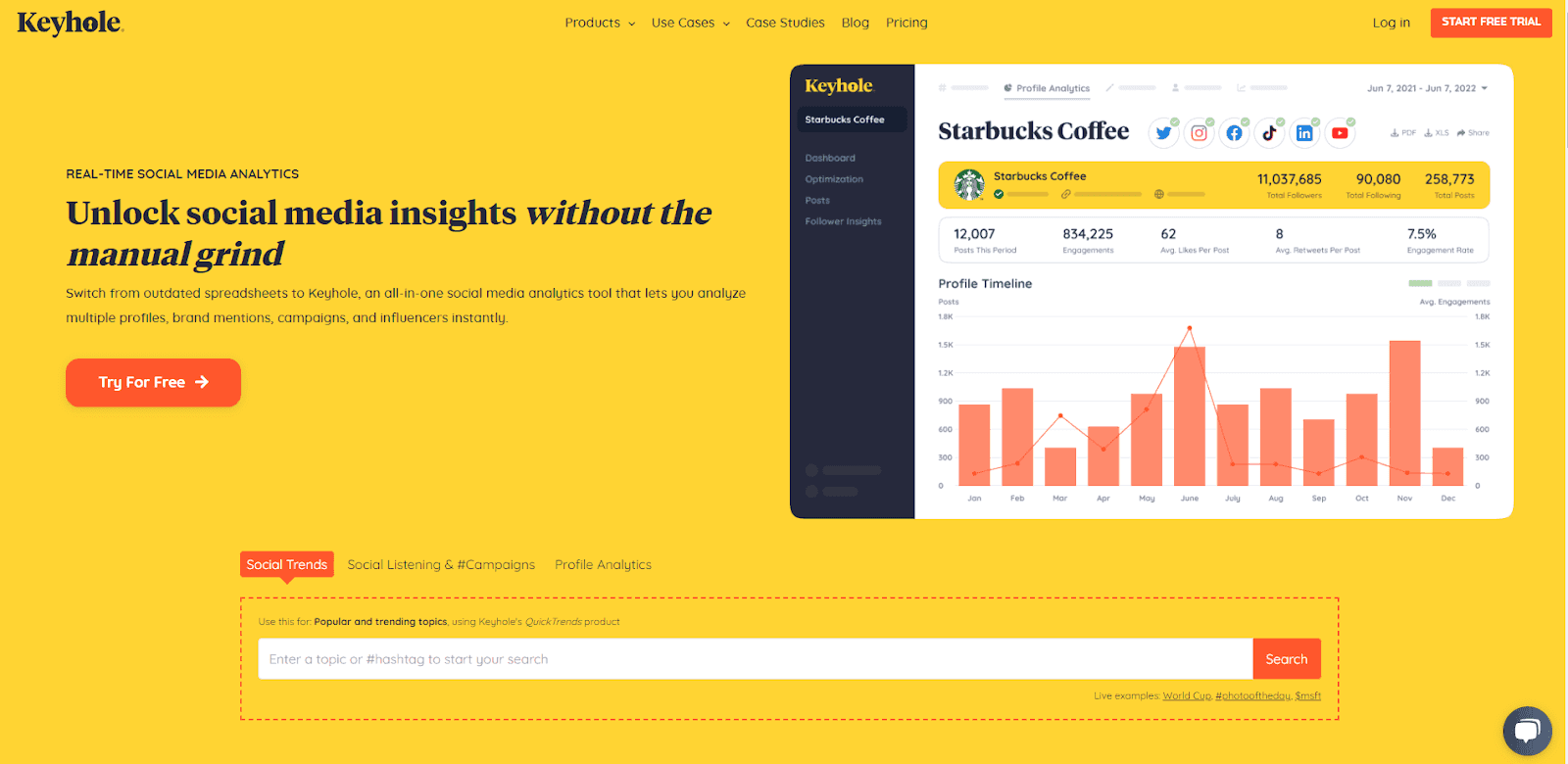
Keyhole is our very own social media analytics tool that offers social media campaign tracking in real-time. It gives brands the ability to keep tabs on their social media engagement and reach, track hashtags and keywords, and find industry influencers. Additionally, Keyhole provides sentiment analysis, enabling brands to track user reactions to their content. Keyhole is a useful tool for evaluating the success of social media campaigns thanks to its extensive reporting and data visualization features.
Brand24
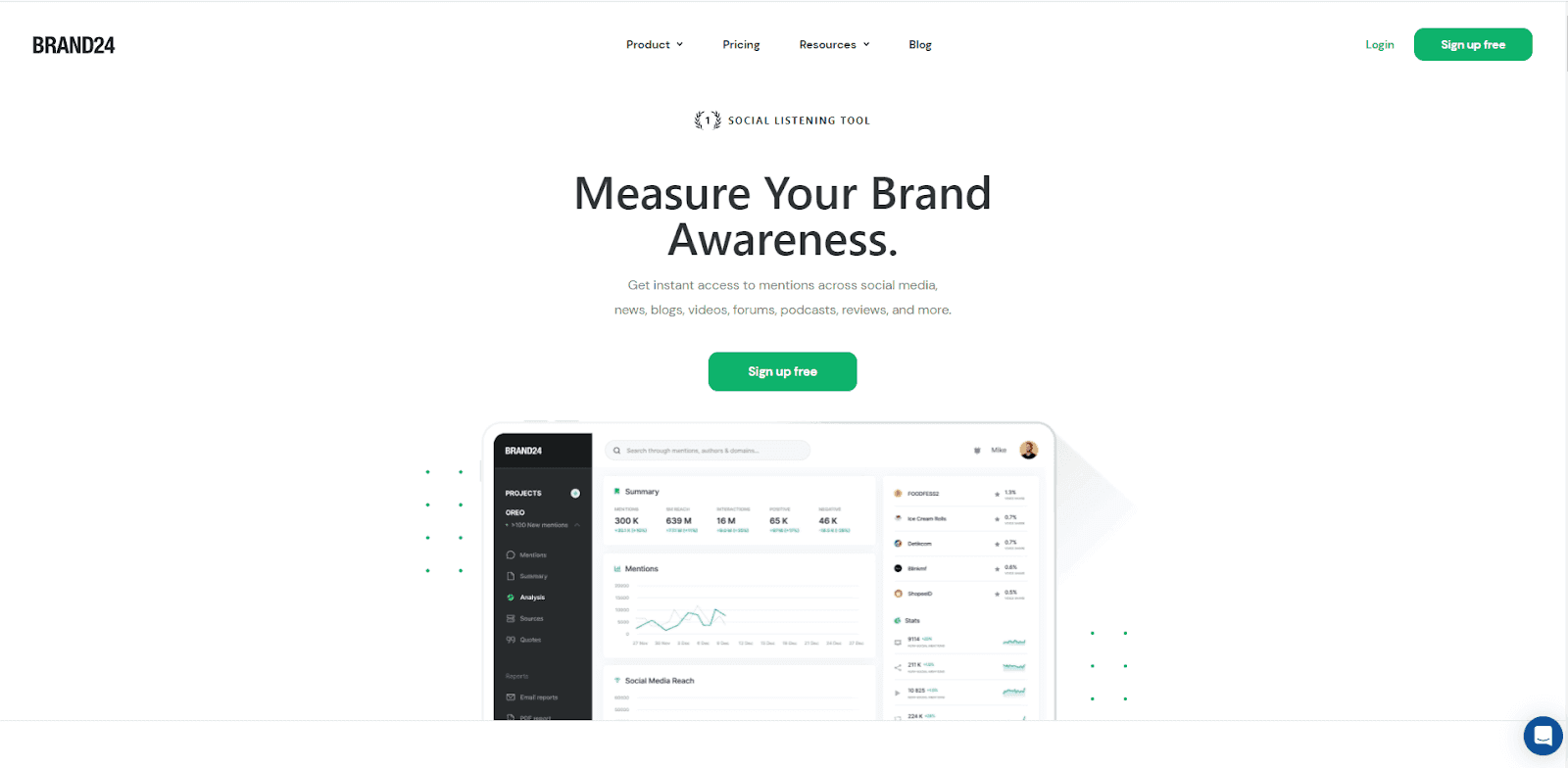
Brand24 is a social media monitoring tool that enables businesses to monitor and analyze mentions of their names and goods on blogs, forums, and other social media sites. It provides sentiment analysis and trend-tracking capabilities, making it simple to pinpoint problem areas and gauge the effectiveness of social media campaigns. Brand24 is a helpful tool for companies looking to boost their social media presence and reputation thanks to its real-time alerts and thorough reporting.
Hootsuite
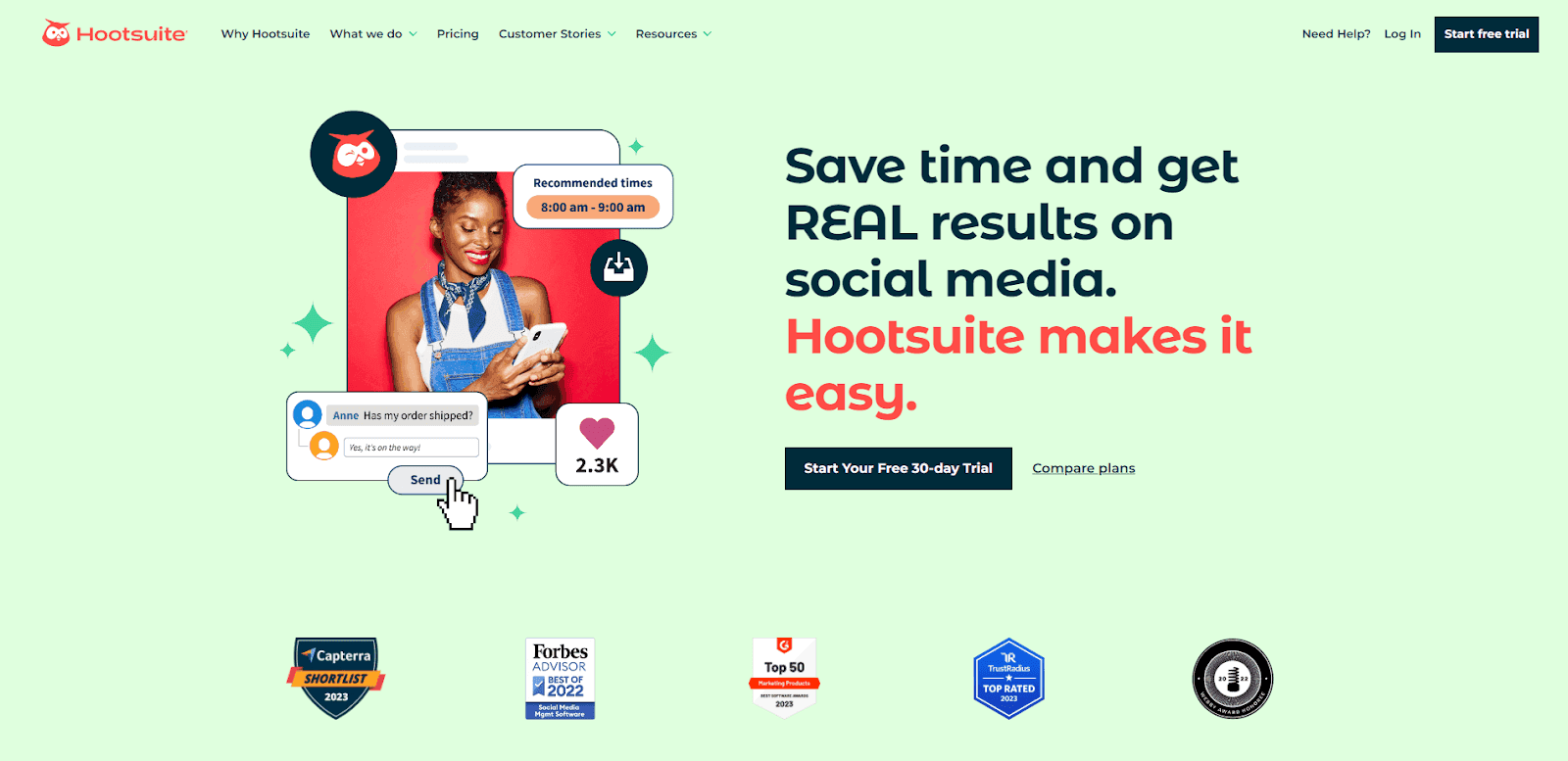
Hootsuite enables businesses to plan and distribute content across numerous social media channels. Additionally, it provides reporting and analytics tools that allow brands to monitor social media engagement, reach, and return on investment. Finally, Hootsuite makes it simple for multiple team members to manage social media accounts and track performance with its team collaboration tools. For companies looking to simplify their social media management and measurement, Hootsuite is a useful tool.
Brandwatch
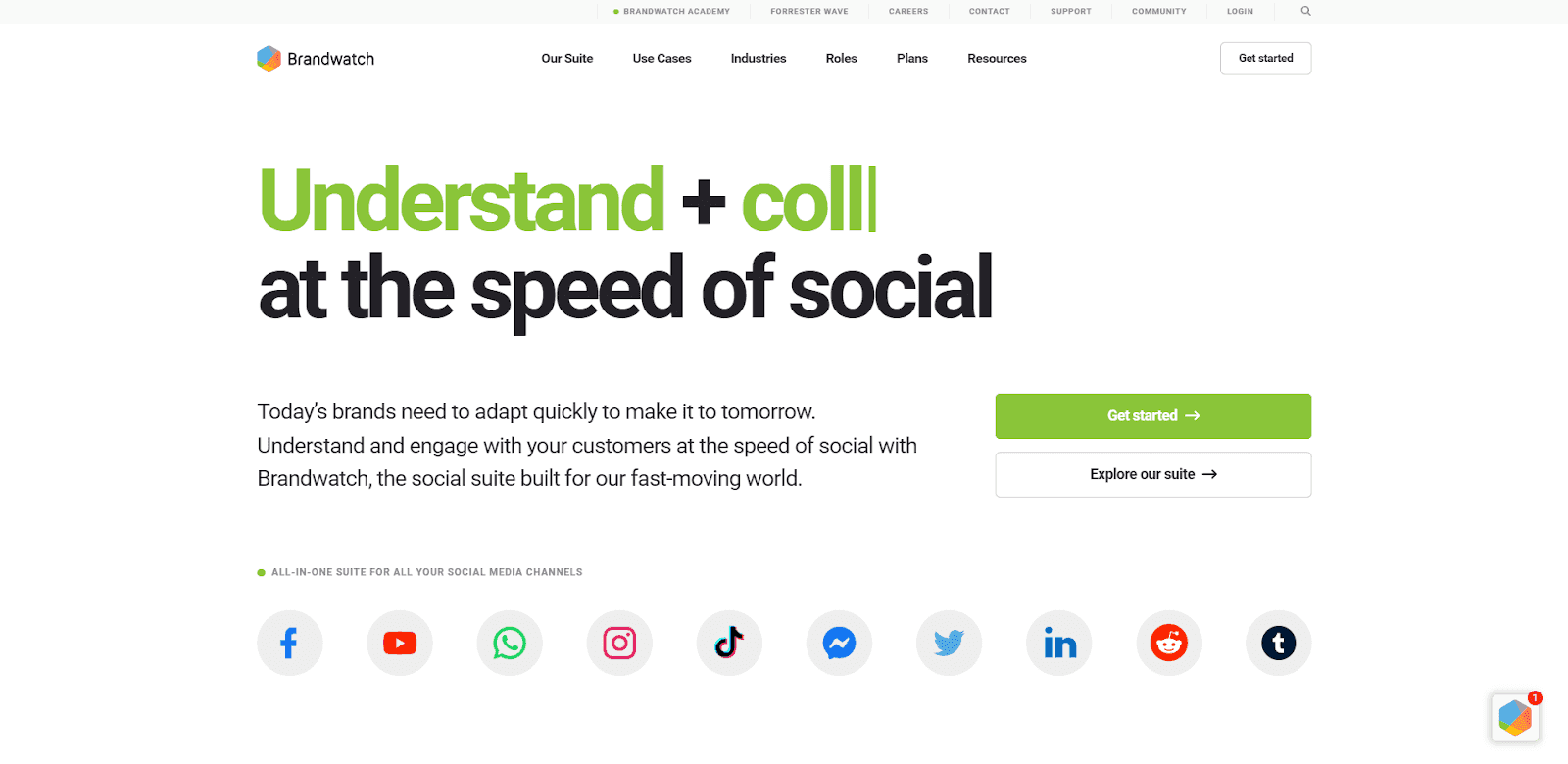
Brandwatch allows businesses to monitor and examine trends and conversations on various social media platforms. Brandwatch offers insights into audience demographics, sentiment, and brand perception through its advanced analytics and reporting capabilities. It is a useful tool for companies looking to assess the success of their social media campaigns and enhance their online reputation because it also provides tools for competitive benchmarking and influencer identification.
Talkwalker

Talkwalker is a social media analytics and listening tool that offers real-time monitoring of blogs, online news sites, and social media platforms. It is simple for brands to track and analyze mentions of their brand and products across various channels thanks to its sophisticated sentiment analysis and image recognition features. Talkwalker is a helpful tool for companies looking to evaluate the effectiveness of their social media campaigns and enhance their online reputation because it also provides crisis management tools, competitive benchmarking, and influencer identification features. In addition, its simple reporting and data visualization tools offer useful information that businesses can use to decide on their social media strategy.
TweetReach
A social media analytics tool called TweetReach offers information on the impact and reach of Twitter content. TweetReach enables brands to track and evaluate the effectiveness of their Twitter campaigns as well as keep an eye on conversations and hot topics in their sector thanks to its real-time monitoring and reporting features.
Its user-friendly dashboard and reporting capabilities offer insightful data on the demographics, engagement, and sentiment of its audience, making it a useful tool for companies looking to assess the efficacy of their Twitter marketing initiatives and enhance their social media strategy.
Tips for Improving Social Media Reach in 2023
In 2023, increasing social media reach will call for a multifaceted strategy considering the social media platforms' ongoing evolution. Knowing your audience is one of the most crucial suggestions for increasing social media reach. To create content that resonates with your target audience and increases engagement and reach, it is crucial to understand their preferences, interests, and behavioral patterns.
By utilizing AI tools, you can streamline the content creation process and increase the amount of content you produce, ensuring that your messaging aligns perfectly with your audience and captures their attention effectively.
Creating and utilizing video content is a key strategy. Incorporating video into your social media strategy can help increase engagement and reach due to the growing popularity of short-form video content on platforms like TikTok and Instagram Reels. In addition, making valuable, visually appealing videos for your audience can help you build brand awareness and increase website traffic.
Social media advertising can also aid in extending your reach past your current audience. Platforms like Facebook, Instagram, and Twitter provide a range of advertising options that can assist businesses in focusing on particular audiences and expanding their customer base.
Increasing reach also requires interaction with your audience on social media. To build a community around your brand and boost engagement, it is important to reply to comments, messages, and mentions. This will give you room to experiment with different types of marketing campaigns, and furthermore, partnering with influencers or other businesses in your sector can help you reach a wider audience.
Conclusion
In conclusion, any effective social media marketing strategy must include measuring social media reach. Businesses can learn important information about their audience and modify their approach using the appropriate metrics and tools. If you want to up your social media game, we strongly recommend taking advantage of Accuranker's free trial today.
FAQ
Q: What is social media reach?
A: Social media reach is the number of unique users who have seen your content on social media.
Q: Why is measuring social media reach important?
A: Measuring social media reach helps businesses understand their audience and the effectiveness of their social media marketing efforts.
Q: What tools can I use to measure social media reach?
A: Many tools are available to measure social media reach, such as Google Analytics, Hootsuite, and more. These tools provide valuable insights into audience demographics, engagement, and more.

Article by:
Nikola Baldikov
SEO Specalist
Nikola Baldikov is a skilled SEO expert who is dedicated to helping businesses thrive. He is the esteemed founder of InBound Blogging, where his expertise lies in search engine optimization and crafting effective content strategies. Throughout his career he has had the pleasure of collaborating with a wide range of companies regardless of their scale and has consistently aided them in accomplishing their objectives online. During his leisure time. He finds joy in engaging in football matches and dance routines.


